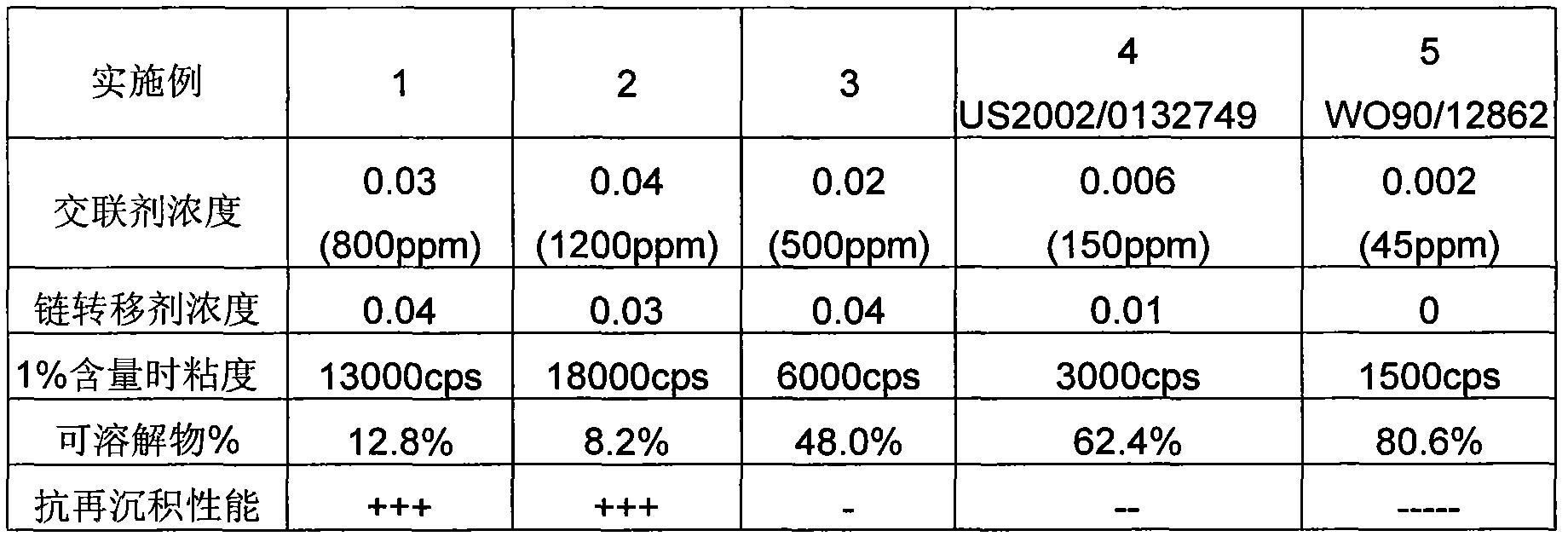Cationic polymer thickeners
A technology of cationic polymers and thickeners, applied in detergent compositions, detergent compounding agents, organic detergent compositions, etc., can solve unsatisfactory problems and achieve good anti-aging stability and good growth viscous effect
- Summary
- Abstract
- Description
- Claims
- Application Information
AI Technical Summary
Problems solved by technology
Method used
Image
Examples
Embodiment 1
[0038] A) Synthesis of Cationic Polymers This example describes the preparation of suitable cationic polymers.
[0039] The aqueous phase of the water soluble polymer is prepared by mixing together the following components:
[0040] — 47.0 parts of dimethylaminoethyl methacrylate chloride quaternary ammonium salt,
[0041] - 6.0 parts of acrylamide,
[0042] - 0.03 parts of pentasodium diethylenetriamine pentaacetate,
[0043] — 14 parts water,
[0044] — 0.03 parts of methylenebisacrylamide,
[0045] - 0.4 parts of sodium formate,
[0046] -Use citric acid to adjust the pH value to between 4.0-6.0.
[0047] The oil phase is prepared by mixing together the following components:
[0048] — 2.0 parts of sorbitan monooleate,
[0049] - 5.5 parts polymer stabilizer,
[0050] — 19.0 parts white mineral oil,
[0051] - 6.0 parts dearomatized hydrocarbon solvent,
[0052] The two phases are mixed together in a high-shear rate reactor at a ratio of 1 part of oil to 1 part ...
Embodiment 2-5
[0079] Change the amount of cross-linking agent and chain transfer agent, repeat the method of embodiment 1, all results are listed in table 1.
[0080]
[0081] Table 1
PUM
 Login to View More
Login to View More Abstract
Description
Claims
Application Information
 Login to View More
Login to View More - R&D
- Intellectual Property
- Life Sciences
- Materials
- Tech Scout
- Unparalleled Data Quality
- Higher Quality Content
- 60% Fewer Hallucinations
Browse by: Latest US Patents, China's latest patents, Technical Efficacy Thesaurus, Application Domain, Technology Topic, Popular Technical Reports.
© 2025 PatSnap. All rights reserved.Legal|Privacy policy|Modern Slavery Act Transparency Statement|Sitemap|About US| Contact US: help@patsnap.com

